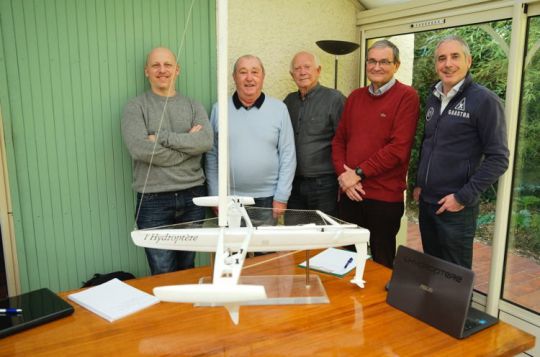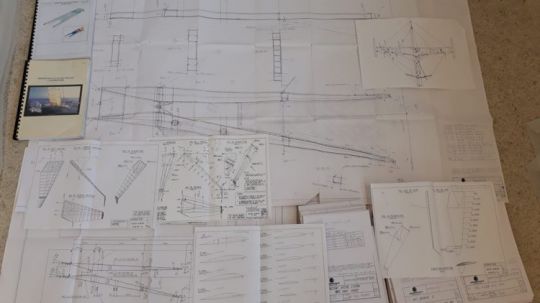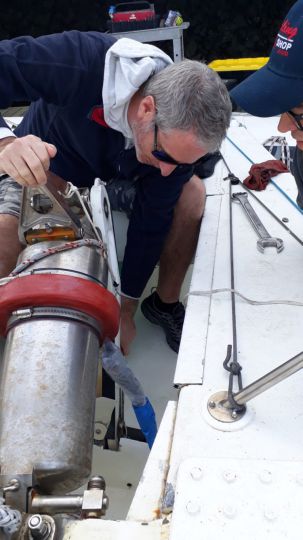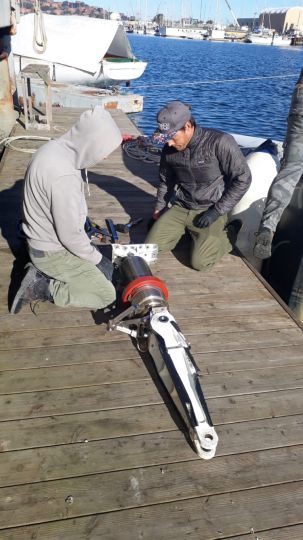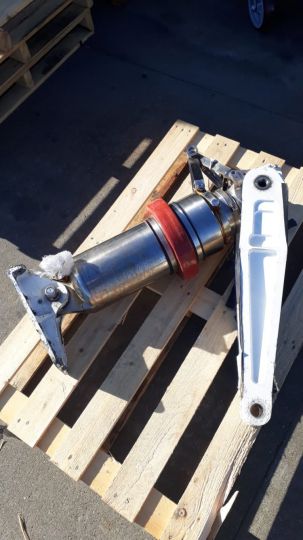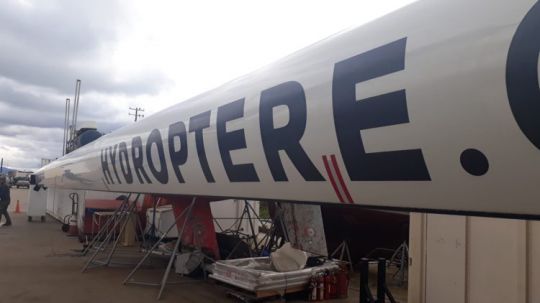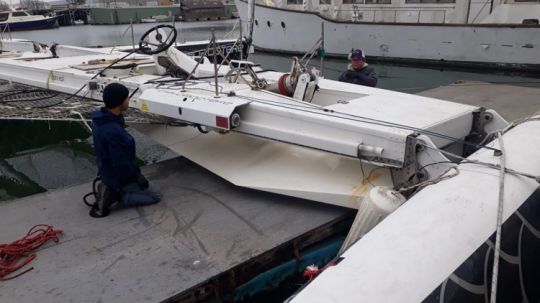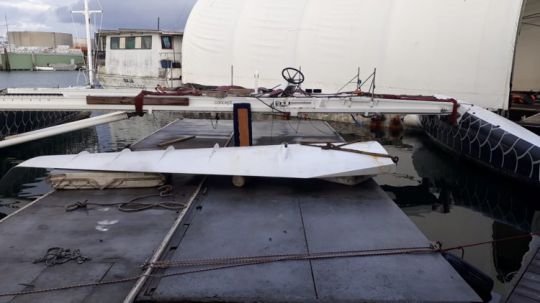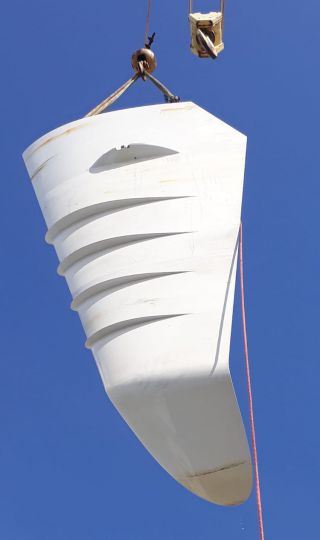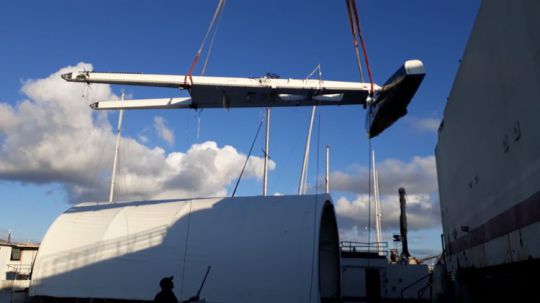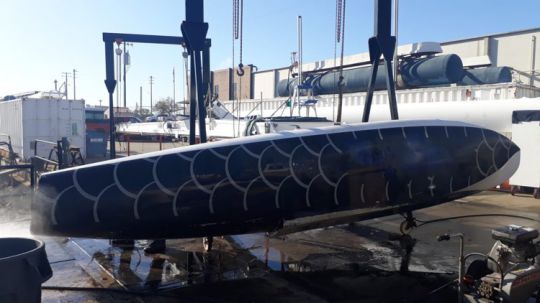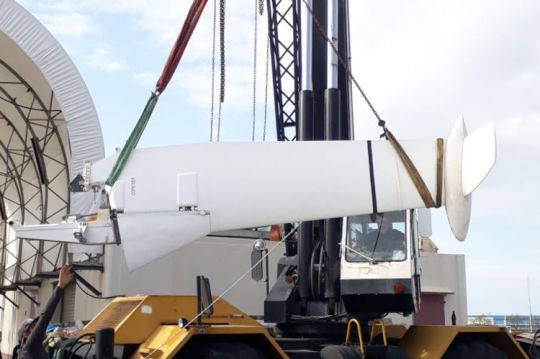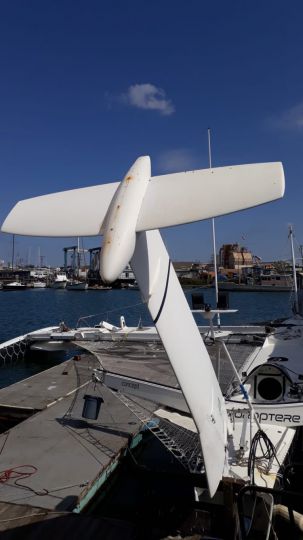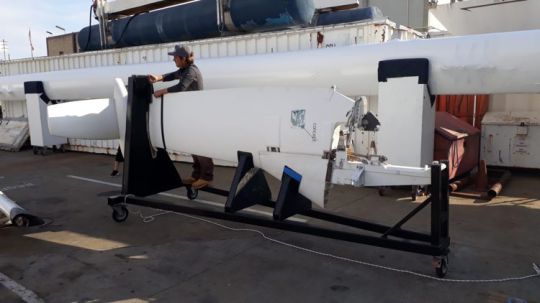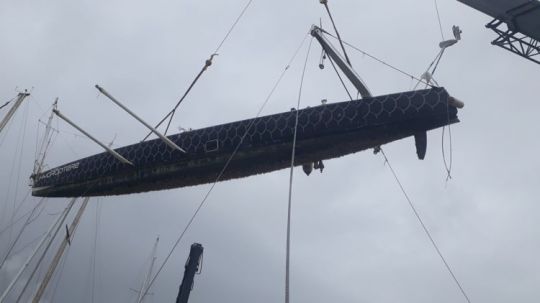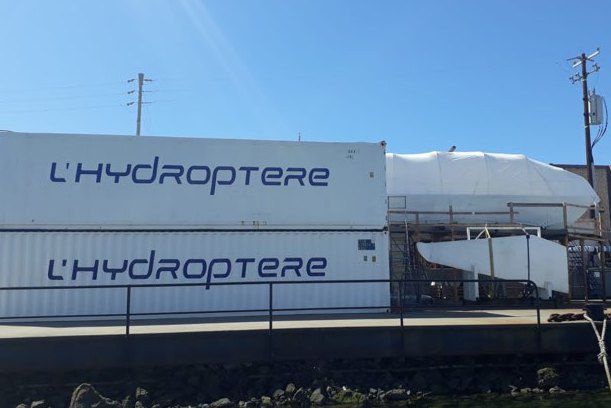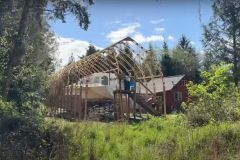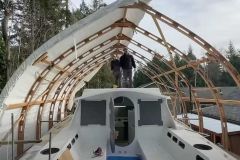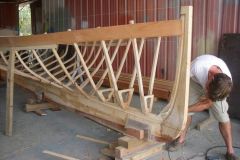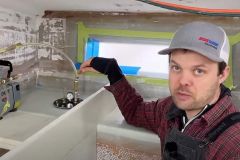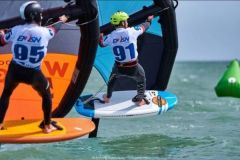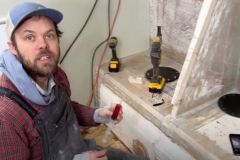In November 2019, l'Hydroptère bought by a Franco-American tandem (Gabriel Terrasse and Chris Welsh) was being shipped back by sea from Hawaii to California. This adventure (15 days at sea) allowed him to join Chris Wesh's shipyard. Indeed, this one has its own shipyard. So when the confinement arrives in March 2020, it is in this shipyard that the 2 men accompanied by the boat captain confine themselves with the aim of dismantling the sailboat and put it in the dry.
Contacted on the phone Gabriel explains: "It's great, because the 3 of us are confined without being hindered by the barrier gestures. We can devote all our days to the boat. With the lifting gear we have, we started by dismasting. Once on the ground, we polished the mast completely and then protected it with wrapping film. Then we set about dismantling the boat. This trimaran was designed to be completely dismountable. But usually this is done once the boat is pulled out to dry. Due to lack of space, we chose to dismantle the boat in the water!"
The engineers who designed the sailboat were consulted. This team, who call themselves "les Papés" (the Popes) were a bit worried: "I had met them during one of my visits to Toulouse. It was an incredible meeting. To see these retired alumni speak so fervently about their work! On that occasion, they also entrusted me with the plans and diagrams they had in their possession, which are very useful to me today."
Apart from a few corroded bolts, the disassembly worked well: "We removed the skimmers, then the foils before unhooking the arms from the central hull. We proceeded to starboard first, then the same operation on the port side. Finally, we pulled the center hull out of the water."
Along with the boat, Gabriel and Chris had also got their hands on 2 containers for maintenance of the boat. Two 45-foot containers marked with the name of l'Hydroptère which contained spare parts, but also the crates for the different parts. Thus the foils or the aft support plan (PPAR for the intimate ones) could be stored cleanly.
Now all the pieces of the boat, like a puzzle, are safely ashore. The next job will be to inspect them one by one with ultrasounds to validate their solidity. This dismantling did not reveal any new surprises. And even if this quarantine period is not conducive to finding a budget, the yard's schedule is not too impacted today. The project to make l'Hydroptère fly again in 2020 is still on the drawing board..
